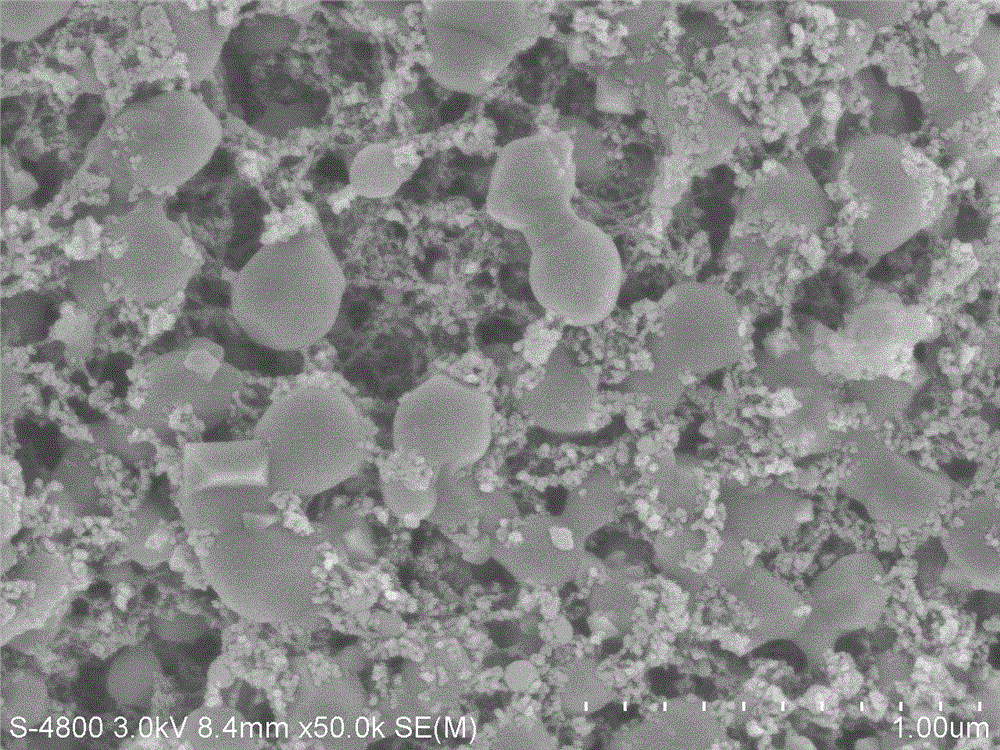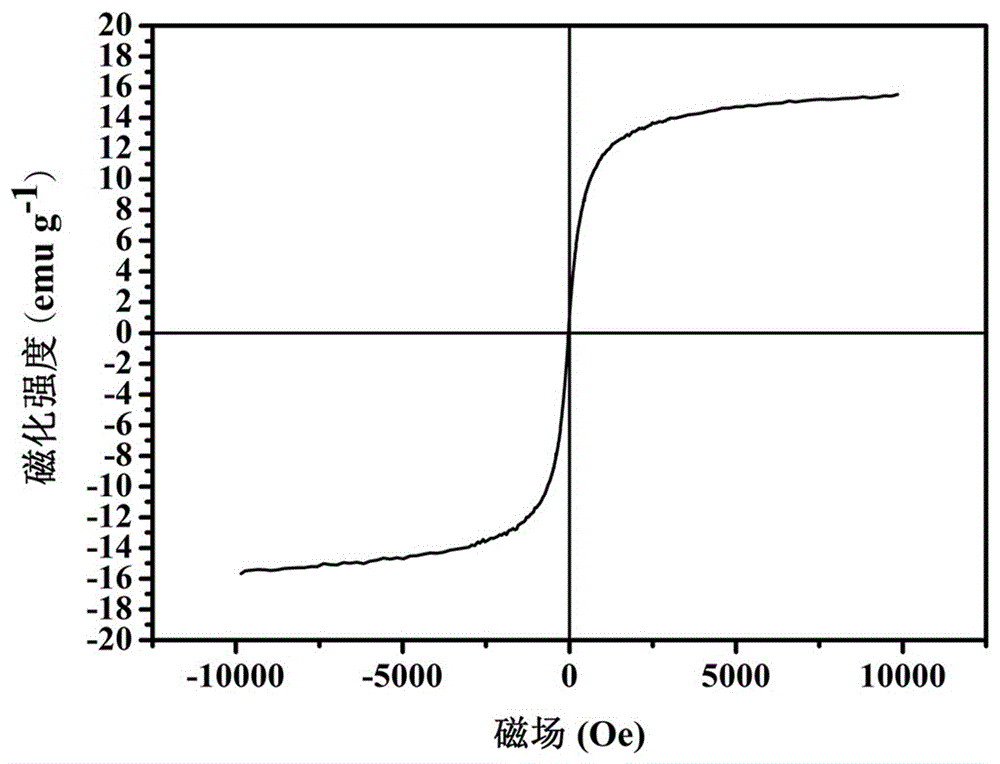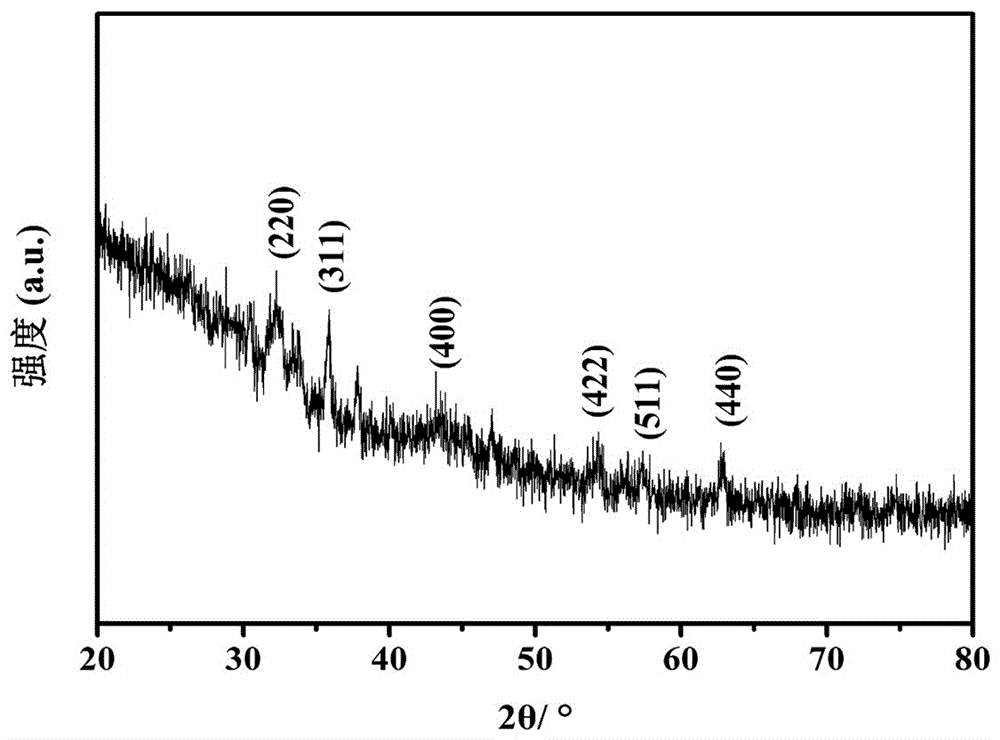Preparation method and application of algae-based magnetic activated carbon material
A magnetic activated carbon, algae-based technology, applied in chemical instruments and methods, alkali metal oxides/hydroxides, inorganic chemistry, etc., can solve the problems of complex preparation process, human health hazards, and unoptimistic conditions, and achieve rich sources. , low cost, good stability and adsorption performance
- Summary
- Abstract
- Description
- Claims
- Application Information
AI Technical Summary
Problems solved by technology
Method used
Image
Examples
Embodiment 1
[0034] Example 1. Preparation of algae-based magnetic activated carbon material
[0035] The cyanobacteria collected from Lake Taihu are washed with tap water. Soak 1g of cyanobacteria in 30mL of 10mg / mL ferric ammonium oxalate solution for 18h, centrifuge and dry at 50℃ for 6h, then spread it in a crucible, put it in an atmosphere furnace, and carbonize at 800℃ under nitrogen protection 1h, and then naturally cooled to room temperature to obtain black powder, which is an algae-based magnetic activated carbon material.
[0036] The obtained algae-based magnetic activated carbon material was characterized by scanning electron microscopy (SEM) and X-ray diffraction (XRD), and its magnetic properties were reflected by the hysteresis curve. figure 1 This is the SEM image of the algae-based magnetic activated carbon material. by figure 1 It can be seen that Fe 3 O 4 The nanoparticles are distributed more evenly on the surface of the algae, and the pores are relatively obvious. figure ...
Embodiment 2
[0037] Example 2. Preparation of algae-based magnetic activated carbon material
[0038] The cyanobacteria collected from Lake Taihu are washed with tap water. Soak 0.5g of cyanobacteria in 6mL ferric chloride solution with a concentration of 5mg / mL for 12h, then dry at 30℃ for 4h, then spread it in a crucible, put it in an atmosphere furnace, and carbonize 0.5 at 500℃ under nitrogen protection h, then naturally cool to room temperature to obtain black powder, which is an algae-based magnetic activated carbon material.
[0039] The obtained algae-based magnetic activated carbon material was characterized by scanning electron microscope (SEM), and its magnetic size was reflected by the hysteresis curve. Figure 4 It is the SEM image of algae-based magnetic activated carbon material. by Figure 4 It can be seen that the Fe produced 3 O 4 Nanoparticles are few and small, and very few are loaded on the surface of algae. Figure 5 The hysteresis curve of the algae-based magnetic activa...
Embodiment 3
[0040] Example 3. Preparation of algae-based magnetic activated carbon material
[0041] The cyanobacteria collected from Lake Taihu are washed with tap water. Soak 2g of cyanobacteria in 60mL of 50mg / mL ferric nitrate solution for 24h, then dry at 80℃ for 8h, then spread it in a crucible, put it in an atmosphere furnace, carbonize at 900℃ for 2h under nitrogen protection, then Naturally cool to room temperature to obtain black powder, which is an algae-based magnetic activated carbon material.
[0042] The obtained algae-based magnetic activated carbon material was characterized by scanning electron microscope (SEM), and its magnetic size was reflected by the hysteresis curve. Image 6 This is the SEM image of the algae-based magnetic activated carbon material. by Image 6 It can be seen that the Fe produced 3 O 4 Nano particles are relatively large and large in size, and almost all cover the surface of the algae, and the pore distribution is not obvious. Figure 7 The hysteresis...
PUM
 Login to View More
Login to View More Abstract
Description
Claims
Application Information
 Login to View More
Login to View More - R&D
- Intellectual Property
- Life Sciences
- Materials
- Tech Scout
- Unparalleled Data Quality
- Higher Quality Content
- 60% Fewer Hallucinations
Browse by: Latest US Patents, China's latest patents, Technical Efficacy Thesaurus, Application Domain, Technology Topic, Popular Technical Reports.
© 2025 PatSnap. All rights reserved.Legal|Privacy policy|Modern Slavery Act Transparency Statement|Sitemap|About US| Contact US: help@patsnap.com



